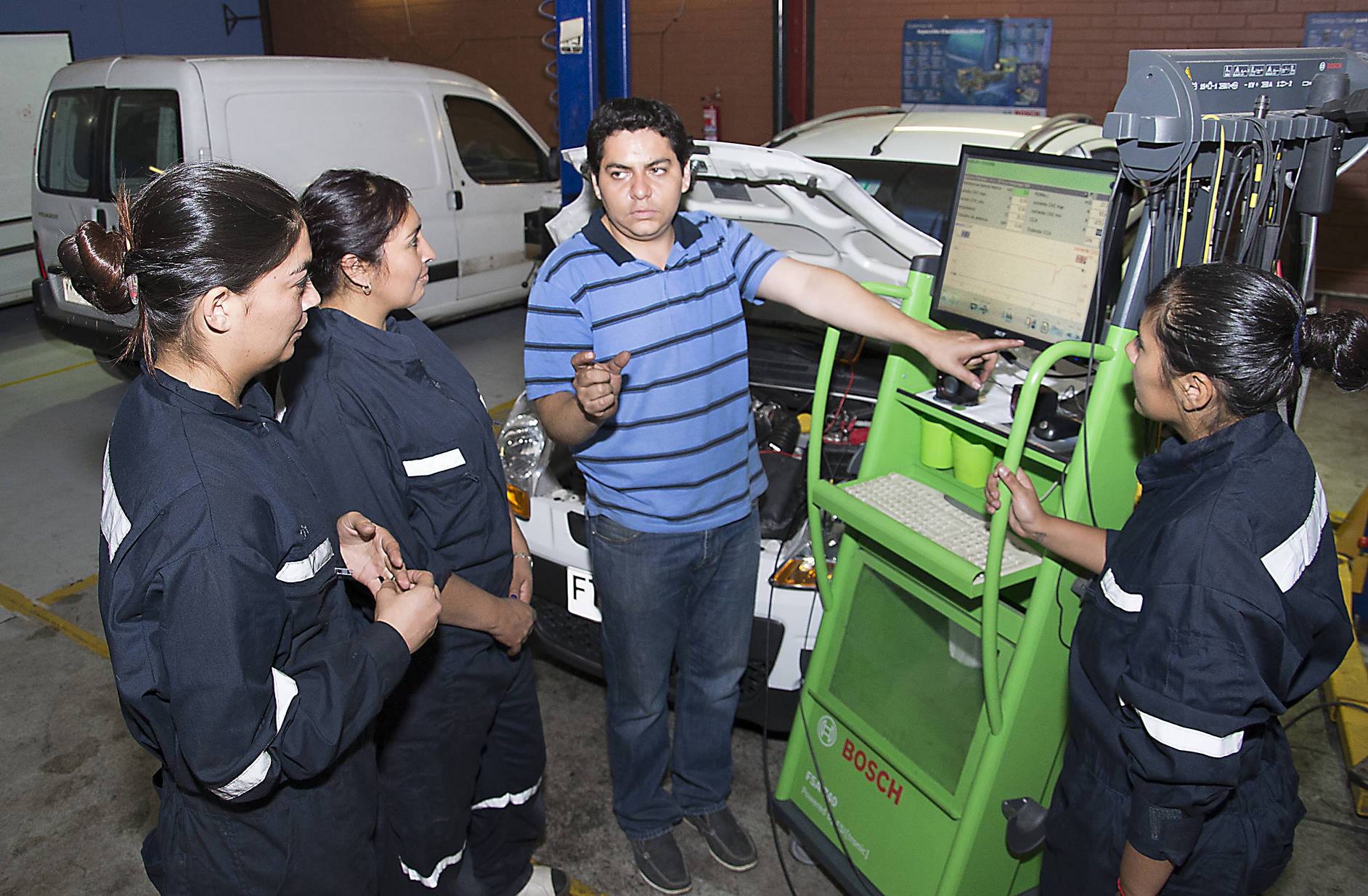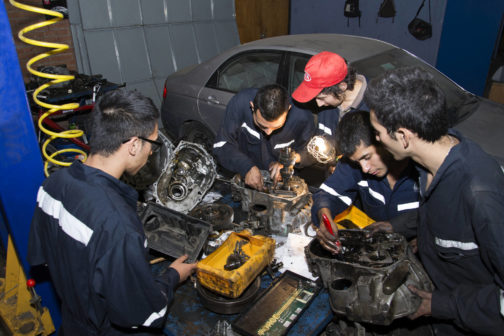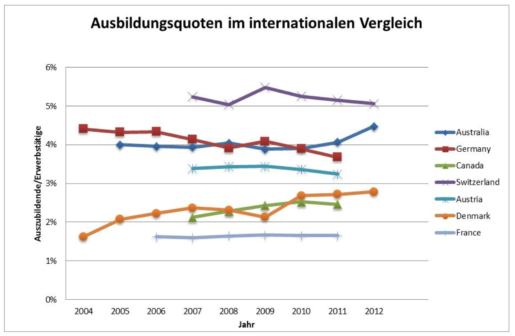In this article Dr Philipp Grollmann, Deputy Head of the Internationalisation / Monitoring of VET Systems at the BIBB, provides an interesting account on the models of the dual system by telling us how they evolve constantly and how they can be applied in other economies. The comparative information shared in this article should be helpful in making important decisions about Vocational Education Policy and Program.
Indian policy – as many other countries on a global scale – has shown vast interest in dual vocational education over recent years. A number of steps have been taken in order to realize dual training structures and studies were commissioned in order to look at possibilities of transferring elements of the German Dual System to India.
Currently, Germany is doing well economically and its success is attracting considerable attention by other countries within the European Union (EU) and outside. The dual system of VET is regarded as one of the major reasons for favourable school-to-work transitions and very good performance when it comes to youth unemployment on the one hand and a good mix of analytical-theoretical knowledge and tangible professional ability on the level of intermediate skills on the other hand. Management experts have stressed the importance of this for the success of the so-called “hidden champions” within international competition. Profiled academic and vocational education, graduates from both tracks, respectively, constitute complimentary factors to an economy and to firms for a sound HRD strategy that leads to quality products and services.

Dual vocational education – constant learning and reform as requirement
However, despite the confidence into the dual vocational education system, it has always proved useful for German education and skills policy to look at the developments in other countries, too. Such mutual learning processes are embedded into the institutionalised structures of European co-operation.
Nowadays, dual vocational education and apprenticeship are high on the European agenda, as it is exemplified by a European Commission led “European Alliance for Apprenticeships” from 2012. The twenty years before were characterised by several European initiatives that looked at other important topics such as the permeability between vocational and general education. Germany had to make considerable efforts to “Europeanise” its educational system through the introduction of the Bachelor- and Master-System in higher education and the implementation of a National Qualification Framework within the European Qualification Framework.
In the eighties and nineties of the last century there was a considerable pressure on German companies to adapt their management practices to the new competition exerted by Japanese companies. This has influenced quite strongly the reform of vocational training regulations. The notion of “process orientation” was influenced by this, a principle that is embedded into modern training regulations within the dual system and that is inspired by Asian management practices such as Kaizen and continuous improvement.
All this shows that there is a constant need to adjust own policies and practices and monitor what other countries are doing. Many countries in Europe are more dynamic in that regard than Germany is just because of their size. Typical examples for this are the Netherlands or Denmark, that not least due to their size were always using other countries as a source of innovation and benchmark. Such countries have implemented reforms over recent years at a much faster pace than Germany.

Varieties of Duality as a source of inspiration
Applied to dual vocational education practice this means that the sources of inspiration can be extended beyond German experiences since there is number of countries that apply the dual principle successfully within their education and skills policies. The following graph shows the relative significance of apprenticeship contracts in comparison to the overall working population. In Germany, this “training rate” is calculated on the basis of the number of trainees as a proportion of all employees subject to mandatory social insurance contributions. We have also followed this calculation to determine the training rates for other countries.
Nevertheless, the organisation of contracts of employment is subject to considerable national differences. The working population has therefore been selected as the denominator for the purpose of this comparison. Labour force information is taken from ILO figures, and information regarding company training contracts is based on data from national training statistics. The apprenticeships stated conceal very different specific regulations and arrangements in terms of contents and forms (see above and the following country examples*) – Source given at the end of the article.

However, if this indicator is considered, not only the “classical” dual systems serve as very interesting benchmark, with a considerable high range in terms of the quantities between Denmark and Switzerland. Colleagues at BIBB jointly with other “protagonist countries” of dual vocational education and training have therefore set up a tool-box for policy and decision makers in VET that are interested in the variety of the practically implementing dual structures and practices (http://www.apprenticeship-toolbox.eu/) .
But also quite different countries show interesting figures, such as Australia where the rate exhibited is nearly as high as in Germany (AUS: 4.0% and DE: 4.2% in 2008). Another interesting example is France, which is usually regarded as strongly school-based vocational education system. However, as the figure shows that there is a considerable number of apprenticeship contracts also within the French labour market, with the distinctive feature that those can involve educational programmes spanning from upper secondary to tertiary education.
The magnitude of realising the dual principle is often not yet mapped in the international discussion around dual vocational education. The sober figures presented here exemplify a number of interesting practices that are interesting for those that are belonging the countries with established dual vocational education and training systems as well as those countries that are only about to introduce such practices. There might be many opportunities for mutual learning that are not yet exhausted.
However, over the last years, increasing consensus was reached internationally on the insight that the question is not vocational or academic nor knowledge versus skills, but that the two are partners within education and skills policies that reflect the requirements of international quality competition and social integration.
*Source: Labour force data is from the ILO database (ILOSTAT) and is based on national labour force surveys. Data on training contracts is taken from national statistical offices. Deviations to the German training rate stated in the Data Report to accompany the Report on Vocational Education and Training are the result of the different denominator used. Here, this is the “labour force”, whereas the national calculation for Germany is based on “employees subject to mandatory social insurance contributions”.
About the author
 Dr. Philipp Grollmann, German Federal Institute for Vocational Education and Training (BIBB) Philipp is deputy head of the section “Basic Issues in Internationalisation of Vocational Education and Training (VET) / Monitoring of VET systems” in the Federal Institute for Vocational Education and Training (BIBB). Before joining BIBB he has worked with two other large research institutes, Institut Technik und Bildung at Bremen University and the German Insitute for International Educational Research in Frankfurt am Main, DIPF. Since 1998 he has carried out and managed more than ten research and development projects in Vocational Education and Training for different EU-bodies. Philipp is a specialist in the comparison of VET systems with a specific focus at company based vocational learning and staff in VET. He took responsibility in several policy related studies, such as the Maastricht-Study on the progress of VET systems (2004) and the study on traineeships in the EU on behalf of DG Employment, Social Affairs
Dr. Philipp Grollmann, German Federal Institute for Vocational Education and Training (BIBB) Philipp is deputy head of the section “Basic Issues in Internationalisation of Vocational Education and Training (VET) / Monitoring of VET systems” in the Federal Institute for Vocational Education and Training (BIBB). Before joining BIBB he has worked with two other large research institutes, Institut Technik und Bildung at Bremen University and the German Insitute for International Educational Research in Frankfurt am Main, DIPF. Since 1998 he has carried out and managed more than ten research and development projects in Vocational Education and Training for different EU-bodies. Philipp is a specialist in the comparison of VET systems with a specific focus at company based vocational learning and staff in VET. He took responsibility in several policy related studies, such as the Maastricht-Study on the progress of VET systems (2004) and the study on traineeships in the EU on behalf of DG Employment, Social Affairs















[…] Models of dual vocational education: sources of mutual inspiration […]
Can I have a clear short answer may I do b. Voc degree in distance education?
YES YOU HAVE TO OPT B.Voc as a Career but it’s not possible In Distance Education